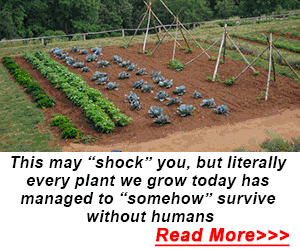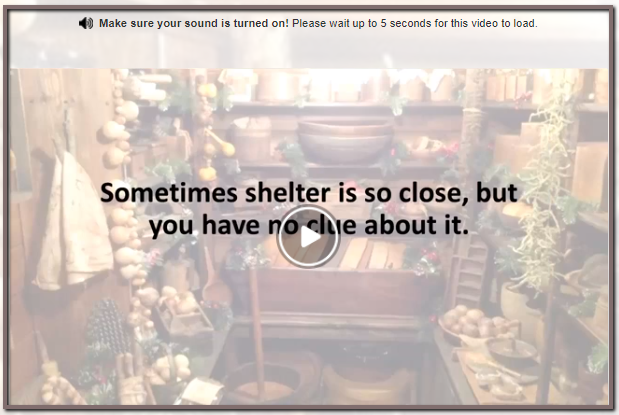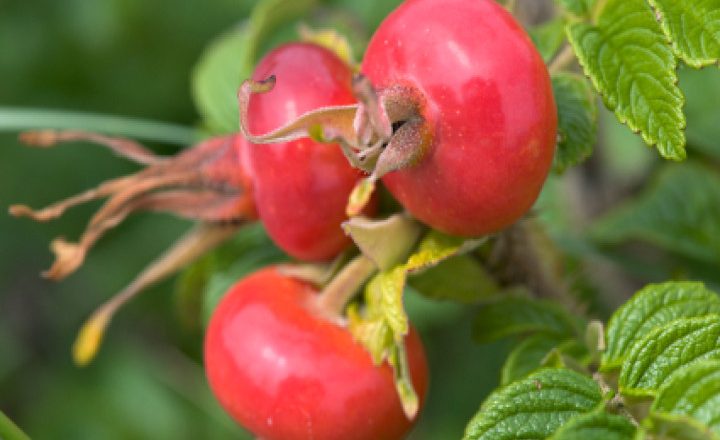Even if you live in a city, you might be shocked to find out how much food is available, free for the taking. I’m not talking about shoplifting from the corner store – I’m talking about foraging.
In ancient times, humans were hunter/gatherers. Gatherers spent the day seeking nuts, berries and edible plants. These items were then turned into a nutritious meal or beverage.
The first rule of foraging is BE ABSOLUTELY SURE YOU KNOW WHAT YOU’RE EATING. Foraging can be deadly if you eat the wrong thing.

The best way to learn to forage is to find someone who knows how to find all the best goodies. A teacher can speed the learning curve up immensely, and they are likely to know the best local places to find the items.
Unfortunately we can’t always find a willing instructor. If it turns out that you’re on your own, the next best option is a good field guide with photographs. You can often find field guides geared to your local terrain at hiking and camping stores. Your local bookstore and Amazon are other good resources. You can buy a more general guide, say, for North America, but there will be a lot of information that isn’t pertinent to your area.
When foraging in an urban environment, you have to be very careful that your finds are not contaminated. They can be contaminated with many different toxins, from pesticides to pollution. You will want to stay away from major roadways and railroad tracks, for example. If you are in farm country you don’t want to be in an area that may be contaminated with animal waste from runoff.
Personally, I strictly avoid mushrooms in my search for wild foods. The edible mushrooms and the toxic ones are very similar in appearance, and not something you want to learn by trial and error, as the error could be fatal. There are many books on the subject that cover proper identification if you are a braver soul.

In the city you can often find fruit trees like mulberries and apple trees. If it appears that the fruits are not being harvested, ask the owner’s permission and bring a bucket! In the wild, you can find blueberries, blackberries and huckleberries in great abundance. These fruits are easily recognizable and a great place to start.
There are many edible greens but none more recognizable than the ubiquitous dandelion. Every bit of the dandelion is edible, from the flower right down to the roots. Pick them in the spring when flowers are still yellow for the mildest flavor.
To get started, make a list of in-season items that are familiar to you. Choose a hiking destination, grab your field guide, bring along some containers and start gathering!
Mother Earth News compiled a brief list of some edible plants that can commonly be found in North America:
Chickweed (Stellaria media)
Chicory (Cichorium)
Curly dock (Rumex crispus)
Dandelion (Taraxacum)
Fiddleheads (various fern species)
Lamb’s quarters, goosefoot (Chenopdium)
Miner’s lettuce (Claytonia perfoliata)
Nettle (Urtica)
Peppercress (Cardamine)
Pigweed (Amaranthus)
Plantain (Plantago)
Pokeweed (Phytolacca)
Purslane (Portulaca)
Seaweeds — dulse, kelp, laver, wrack
Sorrel (Rumex acetosa)
Watercress (Nasturtium)
“Wild” asparagus (Asparagus officinalis ssp. prostratus)
Wild mustard (Brassica)
Wild horsemint, bee balm (Monarda punctata)
ROOTS, BULBS & TUBERSArrowhead, wapatoo (Sagittaria variabilis)
American lotus, water chinquapin (Nelumbo lutea)
Jerusalem artichoke, sunchoke (Helianthus tuberosus)
Ramps, ramson, wild leek (Allium tricoccum)
Burdock (Arctium)
Grassnut, California hyacinth (Brodiaea capitata)
Groundnut (Apios tuberosa)
Prairie turnip, Prairie potato (Psoralea esculenta)
Cattail (Typha latifolia)
Camas, quamash (Camassia esculenta)
Chufa, nutsedge (Cyperus esculentus)
Sego lily (Calochortus Nuttallii)
Coontie, Florida arrowroot (Zamia pumila)
FRUITWild strawberry (Fragaria)
Red and black raspberry, wineberry (Rubus)
Blackberry (Rubus)
Blueberry (Vaccinium)
Wild grapes (Vitis)
Mulberry (Morus)
Juneberry, serviceberry (Amelanchier)
Chokeberry (Aronia)
Elderberry (Sambucus)
Wild cherry (Prunus)
Wild plum (Prunus)
Gooseberry (Ribes)
Buffalo currant (Ribes)
Persimmon (Diospyros)
Rose hips (Rosa)
Prickly pear, tuna (Opuntia)
Pawpaw (Asimina)
NUTS & SEEDSAcorn (Quercus)
Beechnut (Fagus grandifolia)
Black walnut (Juglans nigra)
Butternut (Fuglans cinerea)
Chia (Salvia species)
Hickory (Carya)
Pecan (Carya illinoensis)
Pine nut, pinyon (Pinus species)
Sunflower (Helianthus species)
Wild rice (Zizania)
Once you’ve brought your bounty home, be certain to wash it very carefully. Look up instructions specific to the food before preparing it, because wild foods can have some unexpected peculiarities. For example, pokeweed can cause severe intestinal distress if you don’t change the water several times when boiling it.
There is little you can do to become more self-reliant than learning to find your own food in the wild. Today, foraging might be just another of your eccentric hobbies. Tomorrow, that eccentric hobby could save your life.

source : Tess Pennington



